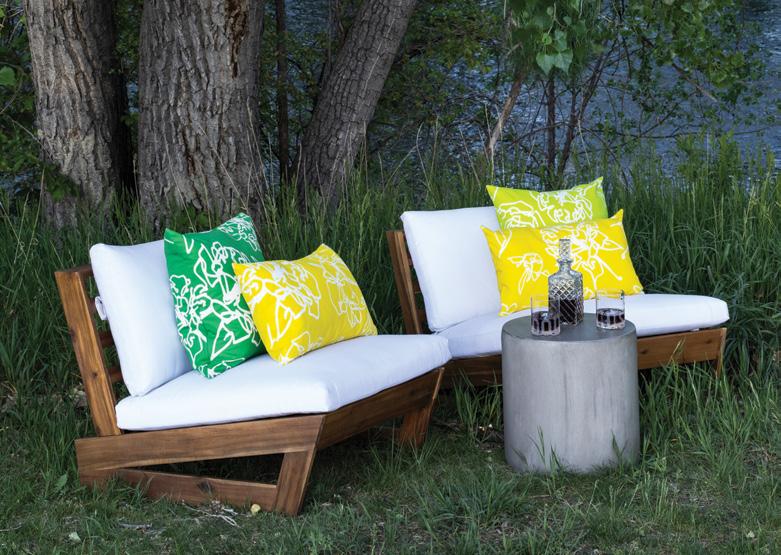ARTful style







Welcome to the Summer Issue of ARTful style! From the front cover to that last page, we invite you to find where the beauty of art intersects with the joy of summer living! As you will see throughout this issue, we focus on sun-filled gardens and outdoor spaces, bold acrylics and the art of living well that celebrate Nature’s glorious tapestry of color and artistry.
Collectively, the ladies of ARTful style LOVE any opportunity to gather! (The recap of our Gallery at 2175 industry event on Pg. 14 says just that!) However, we remind you that hosting an event need not be relegated to your dining room or require the finery stored until the holidays! Nothing brings people together or feels more indulgent than a meal served outdoors. Break out your best tableware and silver … most beautiful linens … add etched crystal stemware and glasses, and offer artfully crafted bits, bites, and sips, and suddenly you are lolling about in the sunny fields of Tuscany. In the “Summer Setting ARTful style” spread, we bring forth our vision laid with the “good China” and highlighted by cf + home’s newest collections: the stunning “Modern Peony” and “Cool Cowboys” patterns by Carrie Fell on custom-etched crystal and fine linen textiles. (P.S. A light Rosé champagne or wine really brings it all together!)
Summer also means gardening! In this issue, we touch on outdoor spaces and the innate confluence of art and nature. Carrie leads you into her own garden sanctuary and illustrates how cultivating a carefully curated outdoor space begins with an introspective focus on tending to beauty. She shows how, with a focus on the larger canvas of a natural environment, you can turn your backyard, terrace, patio, or deck into a tapestry worthy of Monet! Finally, we wish to introduce collectors Tricia and Frank McDonald and a few of the stories behind cherished pieces and an art collection spanning two decades. Like beautiful perennials, their friendship has flourished.
Whether you’re an art enthusiast, gardener, summer adventurer, or someone who simply loves to savor life’s beautiful moments, there’s a little something this season for everyone. As we embark on this sun-kissed journey together, embrace the beauty abundant all around us, in every form, celebrate the spirit of creativity, and revel in the joys of summer. “May the wind always be at your back and the sun upon your face. And may the wings of destiny carry you aloft to dance with the stars.” Well said, George Jung. Well said.
One more, let’s begin with the art.

“ May the wind always be at your back and the sun upon your face. And may the wings of destiny carry you aloft to dance with the stars.”
—George Jung
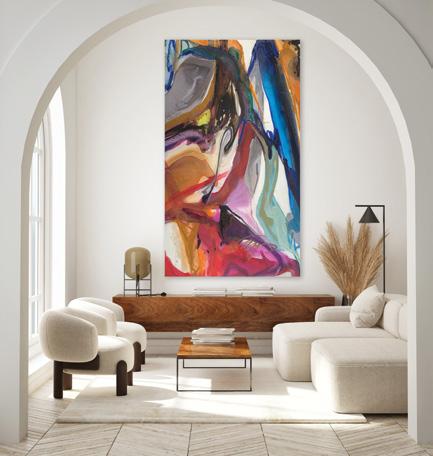
DESIGNLINE - BLUE TUMBLE | as shown 55" X 96" custom hand finished original DESIGNLINE — ©Carrie Fell on display at Accessory Warehouse — Denver
VOLUME II, ISSUE 1
Editor in Chief CARRIE FELL
Creative Director & Design DANIELLE VONFELDT
Business Editor & Digital Coordinator DANA GIDDENS
Lifestyle Editor HEATHER CLANCY
Photographers DON EASTBURN BRIAN BIRLAUF EMILY TAKACS
Industry Contributors DANIELLE VONFELDT, VonFeldt Design LLC, VonfeldtDesign.com
LAUREEN HOPKINS, Studio H by Laureen Hopkins, laureenhopkins.com
CHEF RICHARD BAILEY, TASTE 5 Catering, www.TASTE5Catering.com
Printer
PUBLICATION PRINTERS CORP.
©Carrie Fell and Company, 2025. For permission to reproduce any article in this magazine, contact inqury@carriefell.com

Chief Executive Officer | CARRIE FELL
Chief Operations Officer | DANA GIDDENS
Chief Design Officer | DANIELLE VONFELDT
VP, Sales & Client Relations | HEATHER CLANCY
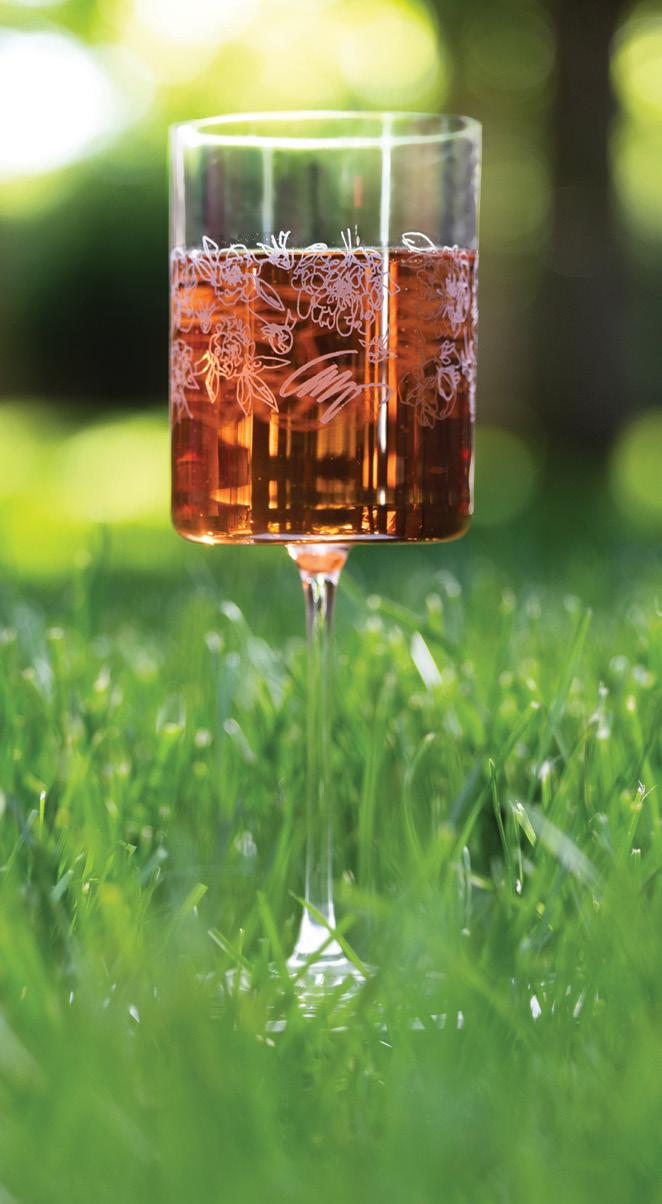
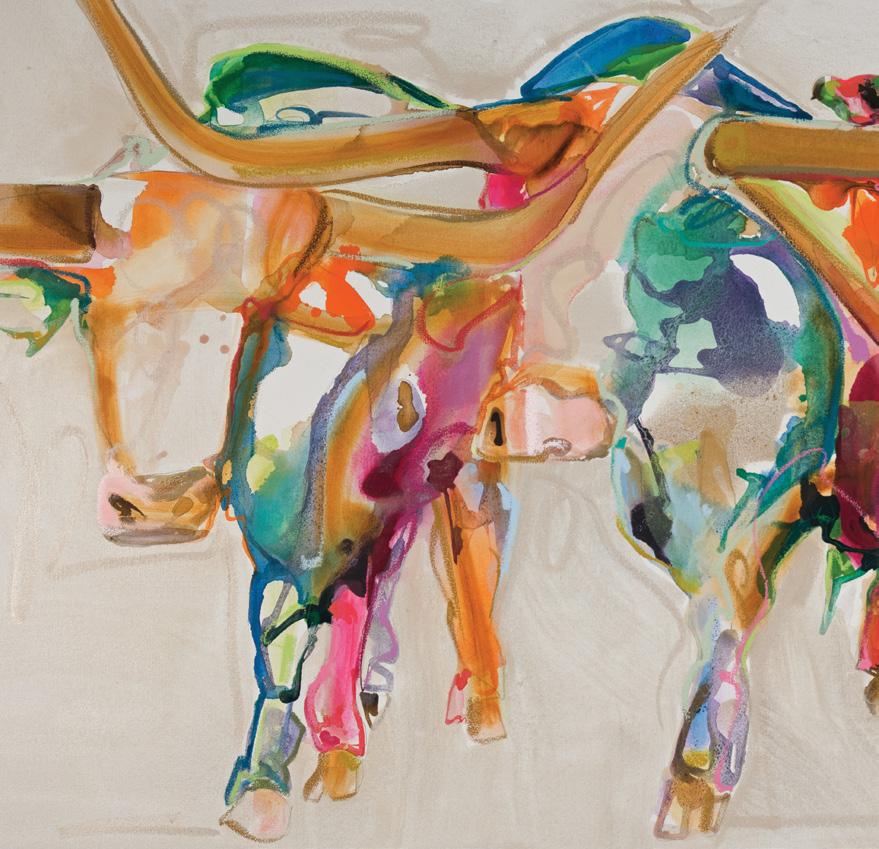
Scan to inquire

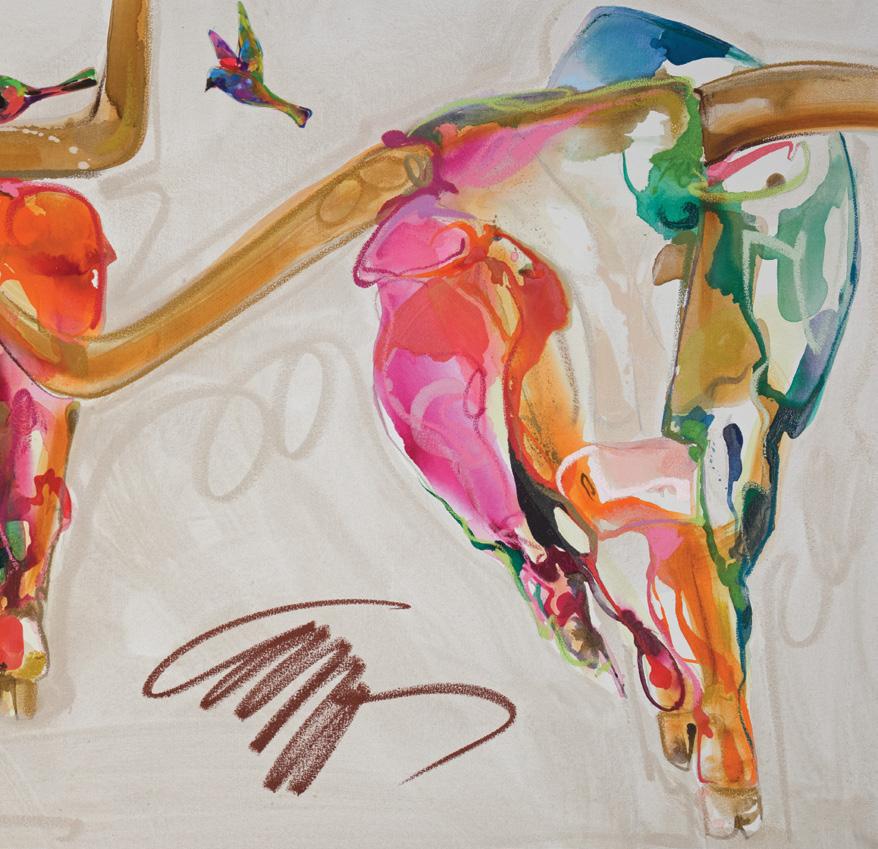
Embrace the adventure of love, where every step we take togethe r is a journey to new horizons ... Find yourself in Carrie's West.
“life create most it especially in environment you for to fresco. your in the China, and experience la
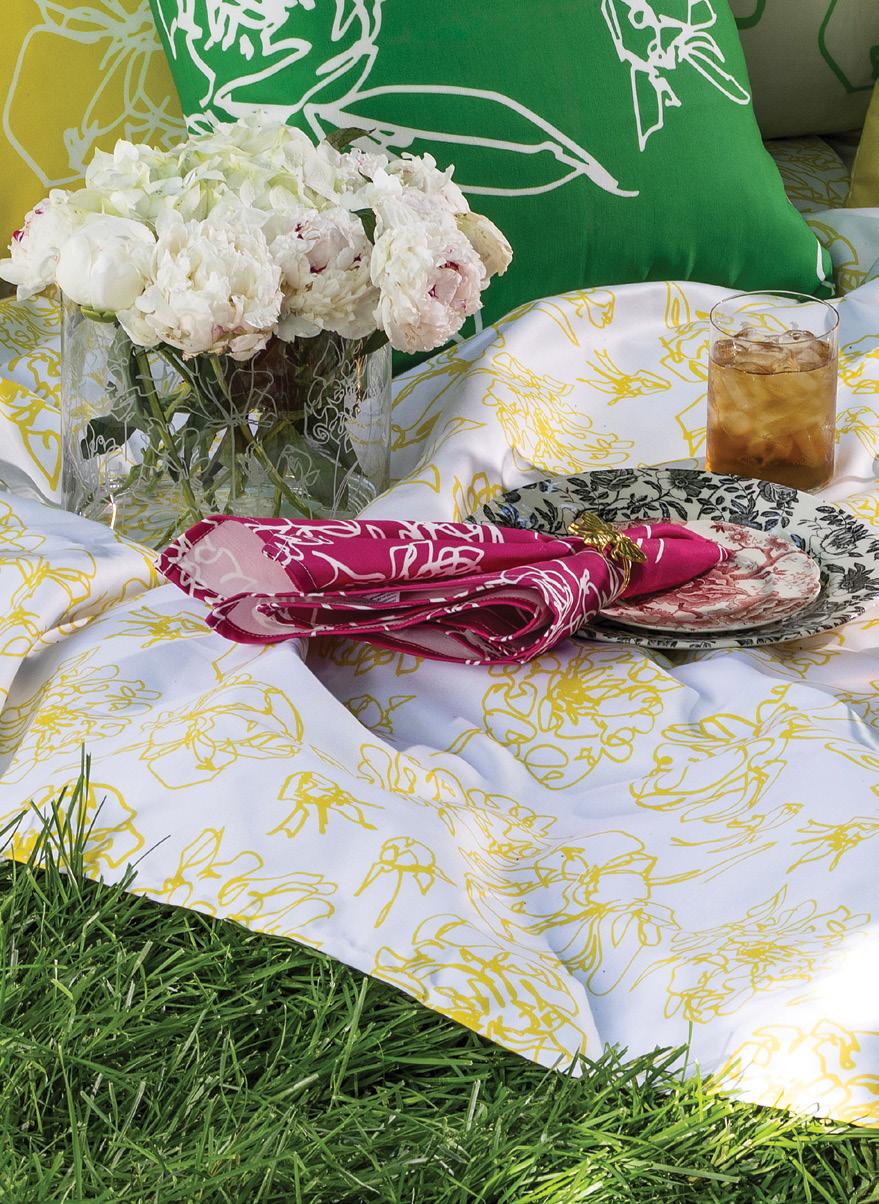
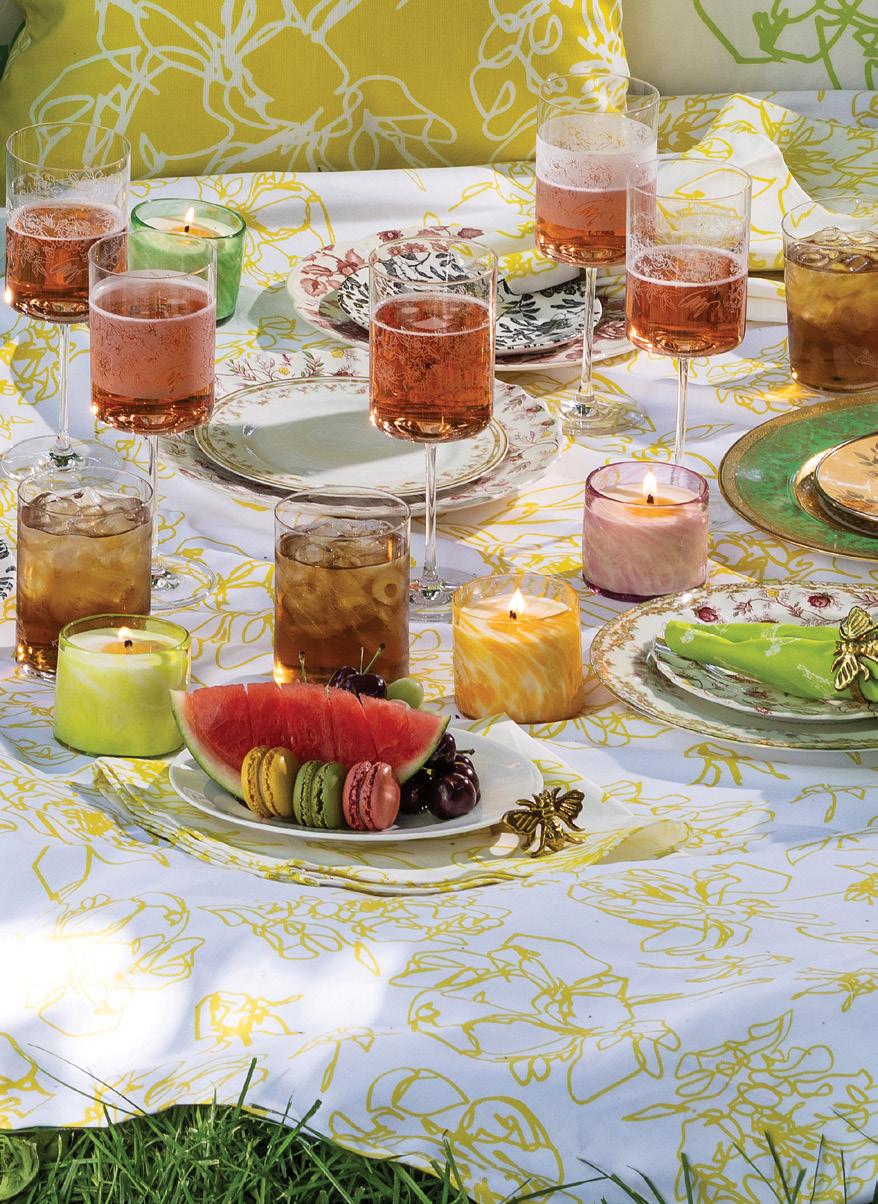
scan for more information

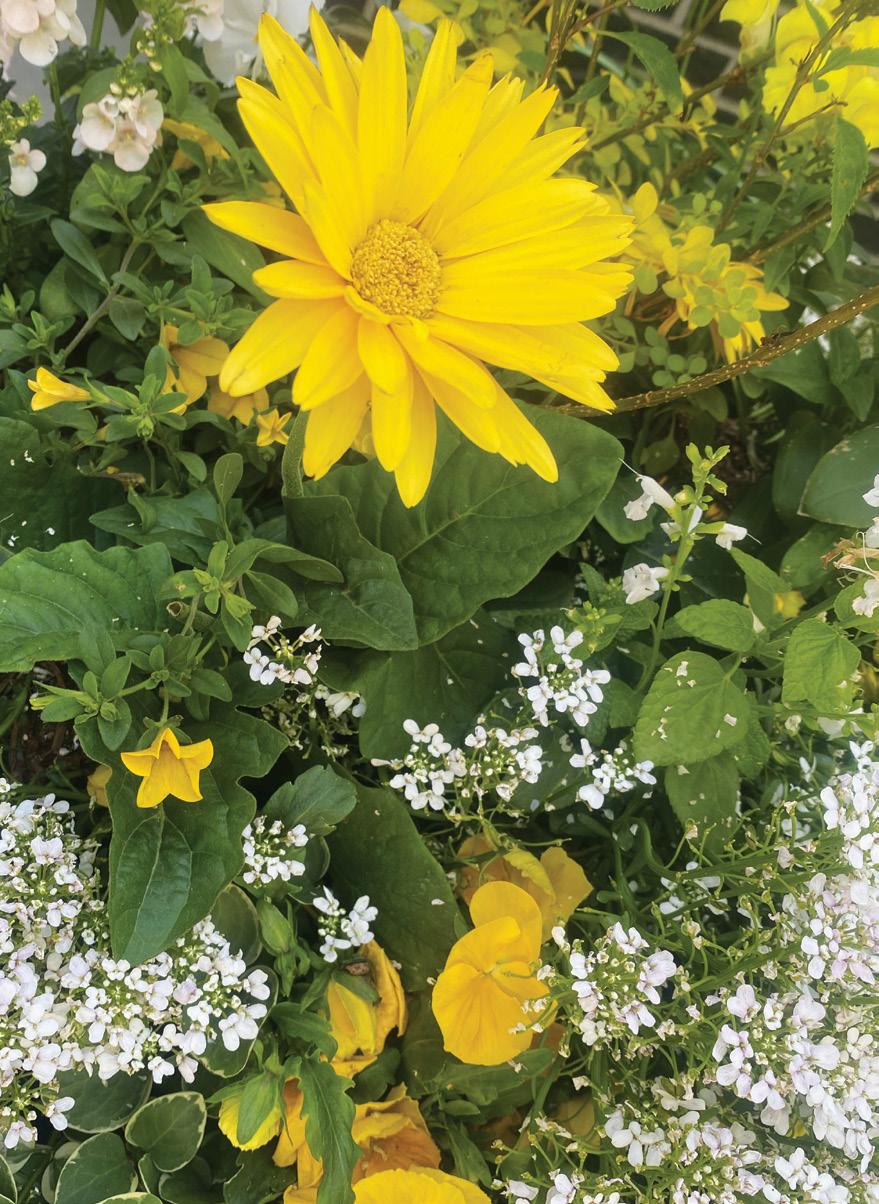
“ To plant a garden is to believe in tomorrow. ”
—Audrey Hepburn
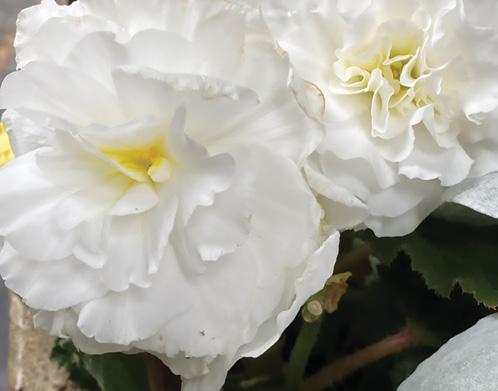
As the seasons change and the days grow longer, many of us feel an innate pull towards nature, a desire to cultivate our own slice of the earth. Outdoor gardens are not merely patches of soil; they are vibrant canvases waiting to be painted with the colors of blooming flowers, the lushness of greenery, and the harmony of nature. The art of planting an outdoor garden transcends mere gardening; it is a journey of creativity, connection, and ultimate joy.
So much goes into transforming the ground into a garden – prepping the soil, adding compost and clearing old growth. But once you’re ready, the real artistry begins… it is time to select your plants.
I like to add perennials in my pots and transplant them into my garden beds in the fall. It’s a great way to start small perennials and maximize the investment of your plants each year. Incorporating a variety of textures and heights adds depth to your garden. Foliage with variegated greens, yellows, and even silver can be interesting, and small shrubs - all varieties - can enhance the visual appeal even when flowers aren’t in bloom. Consider creating focal points—these
can be stunning flower clusters or a striking sculpture. Use the principles of design: balance, contrast, and repetition to guide your layout.
However, the act of planting is just the beginning. Nurturing your garden is where real joy lies. Watering, pruning, and weeding may seem like a chore, but they offer a chance for reflection and connection in the quiet space you’ve begun. Tending to a garden shifts human worries to the serenity of nature. Creating a routine around your gardening can deepen your appreciationearly morning watering sessions bathed in soft sunlight or evening strolls through your garden can become cherished rituals.
The grace of any garden is not only about aesthetics; it’s a powerful way to reconnect with nature and promote well-being. Moreover, gardens can be a sanctuary for local wildlife. Take the opportunity to create a celebration of life, color, and creativity. By understanding your space, carefully selecting your plants, and nurturing them, you can transform any “patch” into a breathtaking sanctuary. — CARRIE
rt, fashion, and wine enthusiasts convened at the Gallery at 2175 on May 1st for an expert panel discussion. Industry specialists provided in-depth insights into key considerations for collecting fine art, antiques, wine, and more, addressing questions of authentication, asset protection, and legacy planning.
That evening, event sponsors and experts from Christine Whaling Art Advisors, Uovo Art | Wine | Fashion, and Chubb Insurance were on hand to join Carrie on the panel and interact with the audience. Key aspects addressed the ideal climate for wine storage, handling and transporting delicate fabrics and artworks, and insuring collections— every detail matters.
We sincerely appreciate the evening’s sponsors and all attendees who joined us to hear that a collection involves more than mere acquisition. We look forward to future events at the Gallery at 2175 that enrich the experience of our CF&Co audience.
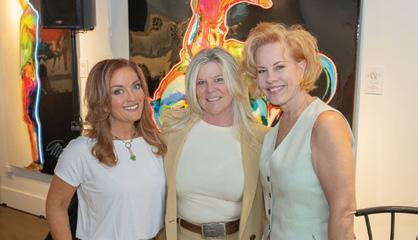


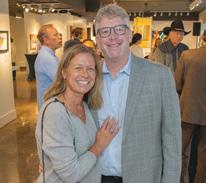


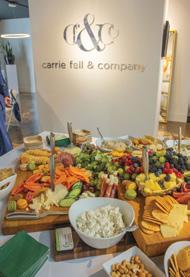

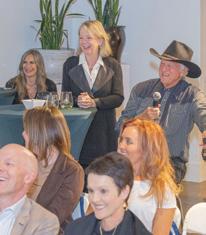

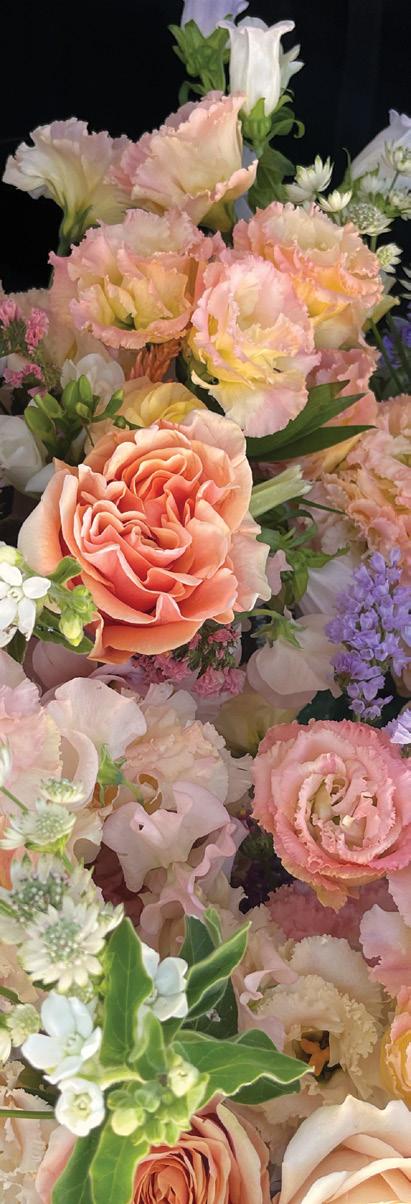


In past issues of ARTful style, we have focused the “Business of ART” segment on the essential considerations for assuring the long-term value of artworks, though authenticity and provenance. Knowing these terms and having both is important to any works you may have acquired. But there’s so much more to art to be considered, such as buying versus collecting.
Some years ago, we had an opportunity to meet with the gallery owner that, by most assumptions, would have offered a prestigious outlet for Carrie’s work. The challenge? Based on his assessment of his market, he worked in the realm of buyers; at cf&co, we endeavor to cultivate collectors.
Art buying is purchasing artworks that you’re drawn to. It’s transactional. Art collecting is more than simply buying many pieces. It is more thoughtful… it is acquiring art over time that more deeply reflects your interests, experiences, and values but which also considers how pieces speak to each other. It’s part of a larger plan, as each new work adds to the larger “whole” of a collection. A collection is thoughtfully built and edited over time.
Most budding collectors will tell you they buy what they like. That's definitely the best way to buy, but as you gain experience, the reasons why you buy what you like should become increasingly more conscious, detailed, sophisticated and purposeful. For example, you might hear a more experienced collector say something like, "Not only do I love this sculpture, but it's also a prime example of Carrie's classic Western subject matter in an unusual medium and it fills a major gap in my overall collection."

The best collectors show this sense of sureness and direction in their plans. Every piece belongs in a superior collection; nothing is random, arbitrary, or out of place. A less experienced collector, on the other hand, may know much about each piece of art they own, but lack an overall understanding of how they relate to one another or even whether they relate to one another at all. You don't want to look around the house one day and wonder, "What have I been buying all these years? I'm not quite sure. I never really thought about it."
So, how to begin a more curated approach to your art collection? Experienced collectors pose a question to themselves and then find answers to piece the collection together. For example, a question might be how have female artists shaped Western art? Or, how has Carrie’s work evolved over her career and what were earlier pieces like? Ask yourself some of the following questions:
• Why do I like the kinds of art I'm buying?
• What satisfies/intrigues/speaks to me about my works?
• Do I like it for the subject matter? What it represents or communicates? Its originality? Techniques/colors/reflection of the artists?
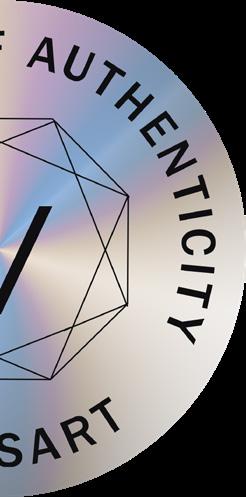
• Does it challenge my thinking about art or the subjects?
• Does it make me feel a certain way or see things in a different way?
• Is it that it's old/new/local/foreign/big/small/abstract/realist/etc.?
When you evaluate your art beyond what you saw when you purchased it, you’ll start to see common threads. And gaps. Is everything in bold color? Perhaps a muted abstract will add balance. What about the subjects? Does everything look the same? Perhaps your favorite artists have different styles and genres you were unaware of.
It is always a delight when we have people discover unusual works by Carrie that speak to them, but that are outside of her more recognizable Western impressionist theme. These are often from our archives and not always available, but collectors are looking for pieces that add to a larger whole. We also enjoy seeing Carrie’s works as a part of varied collections and how they work together to express the many facets of the collector’s experience and personality.
Regardless of how you begin the journey of collecting art, always remember it’s not only the art that adds beauty to life. It’s equally the process of discovery that brings it all together.


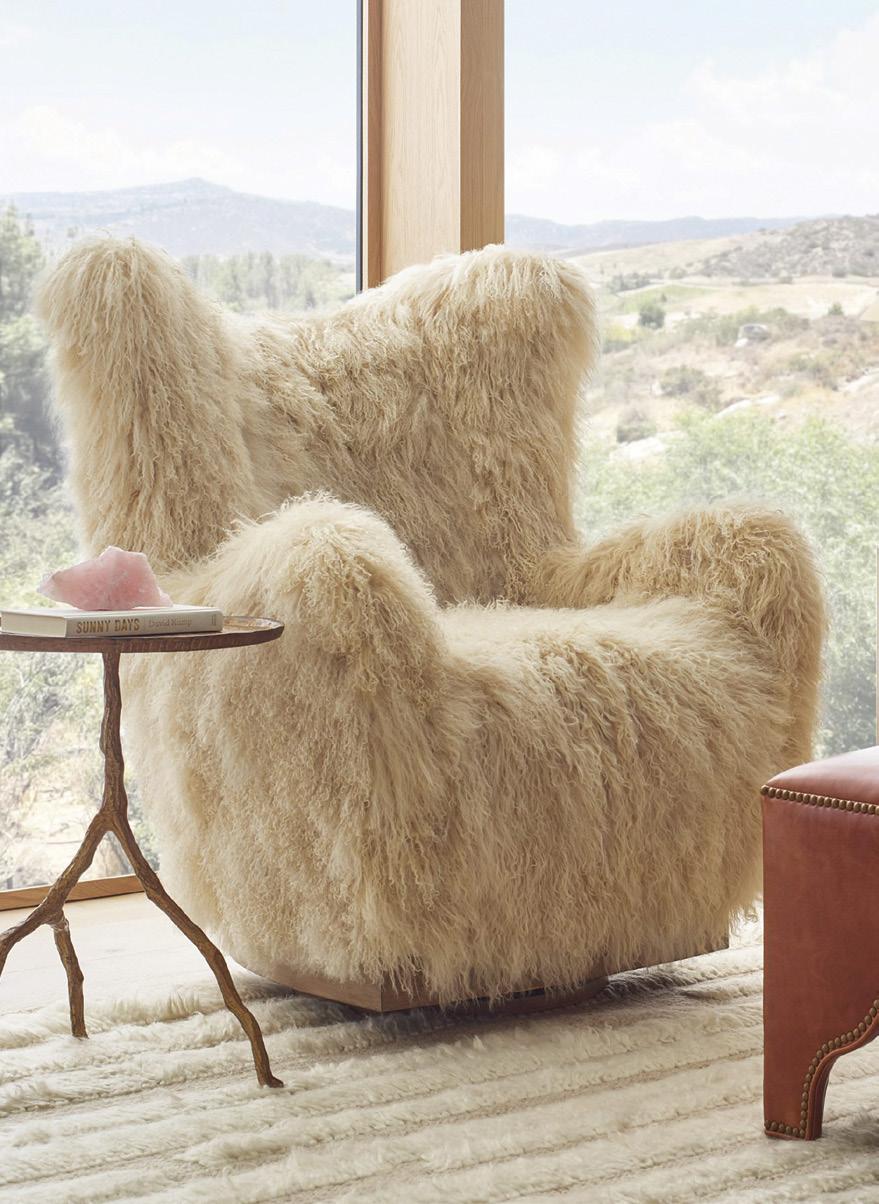
For passionate Carrie Fell aficionados, every work captures a moment –when they first met Carrie… when they acquired a Carrie Fell piece… how each painting or drawing or sketch added to their own story over time as much as her art tells its story. Adding multiple Carrie Fells to their collection feels like an impulse for some. When you see it, you know it belongs among those you already have. For others, it is more calculated, a pointed search that brings Carrie’s fluid movement and bold colors to complement other works in their collection. No matter the approach, all have a story to tell.
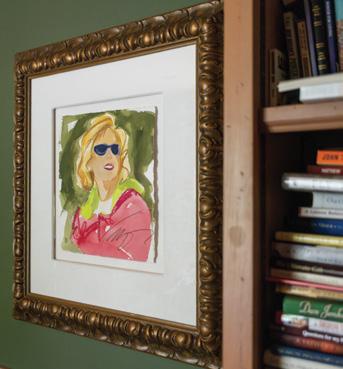
Meet Tricia and Frank McDonald – this month’s Collector Focus draws from their tales of a decades-long friendship that began with a trip to an outdoor art festival and has since traveled to New York, Scottsdale, Tulsa, Beaver Creek, and Vail. They took out from traveling between their home base of Tulsa, Oklahoma, and their other properties to speak with Artful style and share scenes from their relationship and why, even after all this time, their Carrie Fell pieces weave a story of their shared experiences and a timeless friendship.
“We rented a home in Beaver Creek [around] 2000-2001 and went to an outdoor art festival and met Carrie there,” explained Tricia. “She was one of the featured artists, and as an artist, myself, I was completely drawn to her paintings. I loved her use of bright colors in the paintings and the looseness of her subjects... It was abstract yet real. I got my husband off the golf course so he could meet Carrie and buy that first painting! He fell in love with CARRIE, too, and the rest is history. We probably have 10-13 pieces in our (main) house, plus framed sketches from when we all traveled together, and a vibrant painting of a canoe at our lake home.”
“Her art tells a story… whether lived or dreamt… it draws you in, wondering what the story is… allowing you to see your own story in her work.”
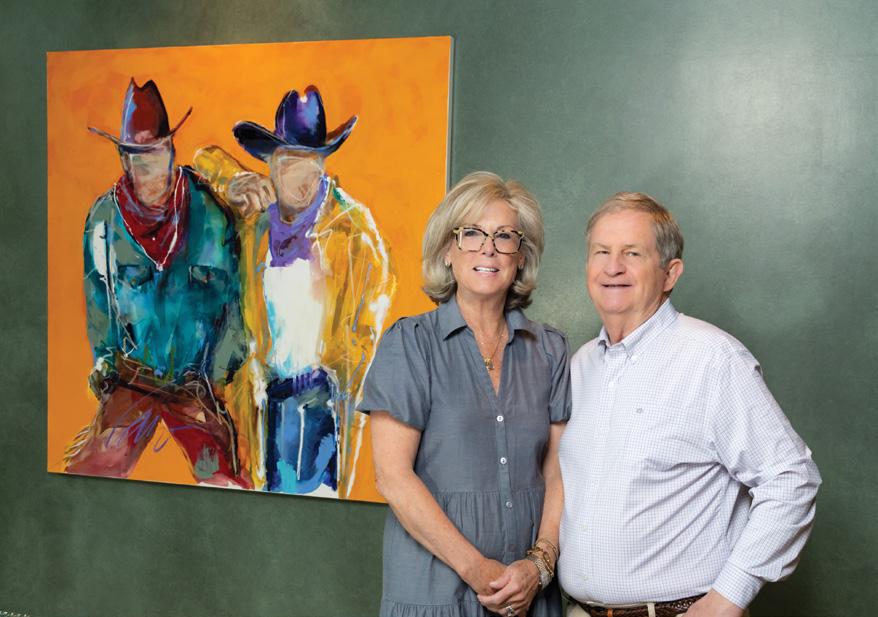
A common thread shared by Carrie Fell collectors is her accessibility to them. Tricia and Frank wholly concur – “Our friendship with CARRIE only makes us want more… Wherever we were with Carrie she would look around at the spaces and the gathering of people and sketch them out in true form or change their clothing to be more like her subjects… Unbeknownst to us when we were sitting outside at the Phoenician Resort in Scottsdale she sketched ME and painted it later in bright colors and gave it to FRANK for his birthday! She lives her life with always the thought about giving back…always thinking of others.”
What is the secret ingredient in Carrie’s work? “We love that she is self-taught and branded herself on her own. She has a God given talent and has never taken that for granted. We have been a part of her life in good and not-so-good times. But through it all she has never lost the desire to paint and keep moving forward. She has had to reinvent herself based on how people buy, interpret or look at her paintings over the years… yet through those transitions she hasn’t changed the person she is. She remains the same CARRIE she has always been. That is deep rooted in her character which will always resonate with a buyer.”
Any advice on collecting art? ”Find a way to connect with the artist if possible.” Makes sense. You never know where a chance meeting will take you or your collection…
In the Spring Issue of ARTful style, we introduced you to Christine Whaling, Founder of Christine Whaling Art Advisory. In this issue, we continue our discussion and the considerations of viewing pieces through the lens of valuing what collectors have amassed.
A.S.: Christine, we are often asked to provide a “valuation” of older Carrie Fell pieces that our collectors may have acquired many years ago. We are always cautious with this process to ensure transparency about what that figure means, depending on the purpose for the information. What is the "language" of valuation in your business?
C.W.: Great question! In the world of art and collectibles, the "language" of valuation can vary significantly depending on the context and the question being asked. It's important to note the difference between a valuation and an appraisal
A.S.: Yikes! OK, so we may need to rethink what we’re telling our collectors.
Then what is an appraisal? How do they differ?

C.W.: Don’t be concerned; it’s a common misunderstanding. An appraisal is a formal, written report produced by a qualified appraiser who is experienced in the specific type of property being evaluated. There are different types of values an appraiser can provide, including: fair market value, replacement value, repair cost, or present worth. The type of value chosen will depend on the intended purpose of the appraisal. For example, fair market value is often used for sales or tax purposes, while replacement value might be more relevant for insurance claims.

A valuation is often a preliminary, complimentary estimate provided by an auction house or sales firm. It’s the value at which the firm is comfortable bringing the property to market, and it’s generally conservative to attract potential bidders. The property might sell for less, more, or exactly at that valuation - it’s just an estimate for the sales process. However, a valuation is not a formal appraisal and cannot be used for insurance, taxes, or financial planning purposes.
That said, from the insurers’ perspective, a gallery valuation is different - they will generally accept it for insurance coverage; however, it depends on the work, the carrier, and the overall size of the collection. Carriers will generally accept gallery valuations for items in the $100k-$1M range - particularly for collections where they need a “refresh" on values every 3 - 5 years. However, for items above $1M, underwriting will take a closer look and will generally be more interested in an appraisal versus a valuation.
Ultimately, the purpose of the appraisal dictates which value should be determined, calculated, or estimated. Importantly, a valuation is not a formal appraisal and should not be used for tax purposes.
A.S.: OK! Got it. What recommendations would you give to someone who isn't sure of the value of their estate and/or artworks? It seems like a big question and could be very overwhelming - how to even START?
C.W.: I always advise clients to start by understanding what they have because, frequently, financial decisions are made based on the perceived value of items. It's crucial to retain the sales receipt and any associated documentation of your pieces, such as sales or exhibition catalogues. These documents can be invaluable down the line when you need to assess value or provide provenance information.
Getting an appraisal can be incredibly beneficial. Not only does it give you a concrete valuation, but it also provides a comprehensive report that includes photographs, cataloging details, and follows industry standards. Whether for insurance, financial planning, or just peace of mind, an appraisal ensures that you have a clear and professional understanding of your collection’s value. Finally, ensure your appraiser charges an hourly rate, flat fee, or project fee; they should never charge a percentage of the value of the appraised items. That creates a clear conflict of interest.
A.S.: Is there anything collectors can do to get a start toward a more comprehensive evaluation and documentation of their pieces? To facilitate a more efficient effort by the appraiser?
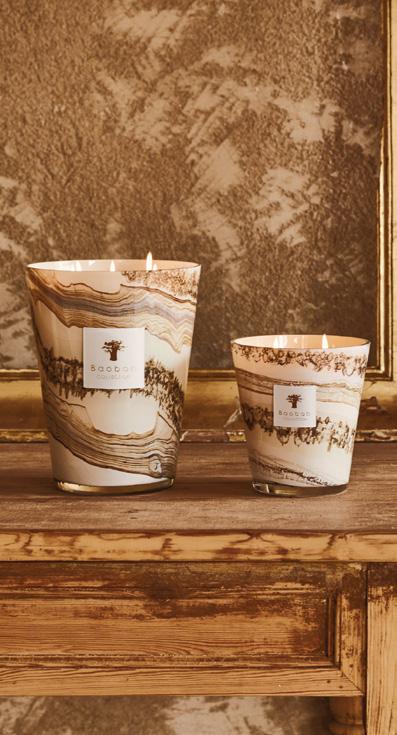

C.W.: Absolutely! Even if you're not ready for a full appraisal, starting with an inventory listing - complete with photos, documents, locations, receipts, and brief descriptions - can be immensely helpful. It’s a great first step to better understanding your collection and its potential value.
A.S.: We completely agree – it can be part of the greater analysis we encourage people to undertake as they seek to build out a collection that evolves with them over time. Thank you for continuing to point us – and our readers! – in the right direction.
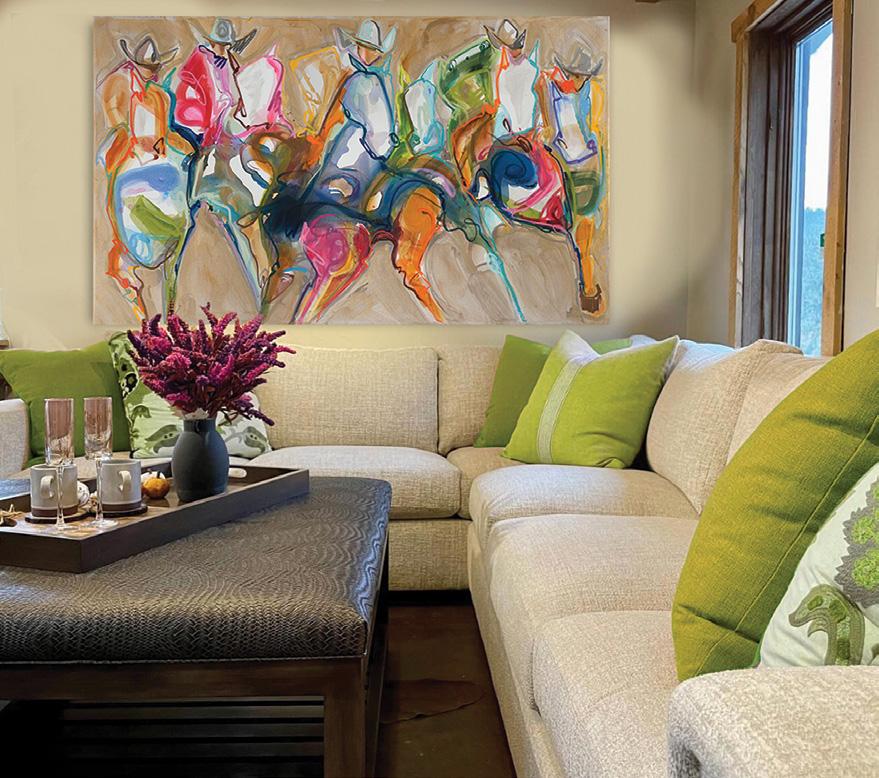
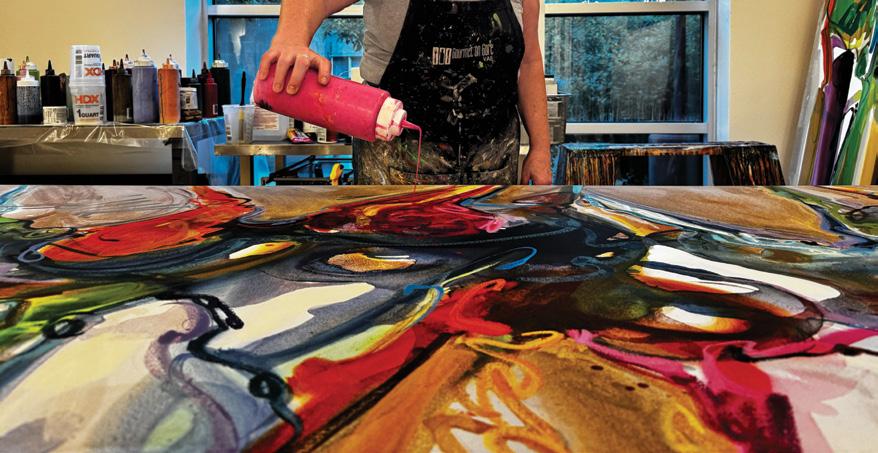
ACRYLIC PAINT
Acrylic paint is a relatively modern medium in the art world. Acrylic paint first developed in the mid20th century, acrylics have transformed the landscape of contemporary art, making it essential to explore their unique characteristics. Why I select this medium as part of my technique is due to the varying consistencies and its versatility, water solubility and vibrancy.
Acrylic paints are water-based. They are composed of pigment particles dispersed in an acrylic polymer emulsion. There are three main components in any acrylic paint - pigment, binder and vehicle:
PIGMENT - pigments are granular solids which give paint its color. They are milled to a tiny particle size and do not dissolve, but remain suspended in the paint. Pigments can be organic, inorganic, natural and synthetic. They have little or no affinity for the surface to which they are applied.
BINDER - a binder is the substance that keeps pigment in place after the paint dries. Acrylic paint has acrylic polymer as its binder and this forms a film after the water has evaporated.
VEHICLE - this refers to the part of the paint that carries the pigment and binder. Water is the vehicle for water-based acrylic and when combined with the binder, it creates a polymer emulsion. Once the water leaves the system via evaporation or absorption, the paint dries, creating a stable clear polymer film full of trapped colored pigment particles.
As a colorist, I am most attracted to Acrylic paints for all of these reasons but, mostly because of the wide spectrum of vivid colors, with excellent lightfastness. Acrylic paints have evolved significantly due to technological advancements, resulting in a wider range of products and enhanced performance. These advancements include improved lightfastness, color permanence, and the development of specialized mediums and additives. Acrylic paint is a remarkable medium that continues to evolve with technology. Whether through intricate layering or bold, expressive gestures, acrylics open doors to endless possibilities. –
CARRIE
Every spring and summer, much discussion and effort in my home go toward, well … garbage. Literally. Not trash, per se (which refers to those things not biodegradable or decomposable) but a more elemental use for the detritus of daily living – all in the name of preparing the garden compost at my house. Composting turns organic waste into nutrient-rich soil, benefiting the environment, especially gardens. The advantages of good compost can offer insight into what can be learned from it.
The art of any garden begins by leveraging that organic waste into compost and the multitude of benefits it brings. Trash becomes treasure. When viewed through the lens of humanity, we see that life is more abundant than we may feel, and that a surplus of essentials exists in the spoils we toss. What happens to these remnants? What if we could amend and transform them? How do we alter our perception of what is valuable, and how can we curate it for greater benefit? This is the conversation in my household as we consider every root that can be gathered
for the garden: eggshells, rinds, coffee grounds, withered vegetables, florals, grass trimmings, weeds. Composting requires discipline and fortitude; it doesn’t happen overnight. The most worthwhile pursuits in life require patience and consistent effort.
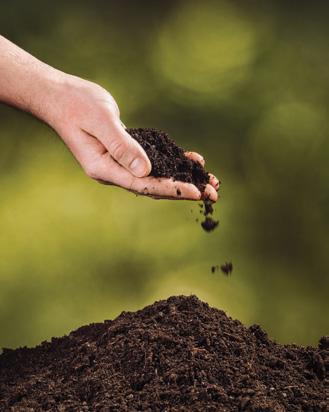
The composting process is the real work of the gardener. The phrase "a beautiful garden grows in the shadow of the grower" submits that a garden flourishes under the care of tending hands… careful and thoughtful effort. Blooms emerge. However, celebrating beautiful new beginnings - standard with each turn of the season - means also praising the value of endings. By that measure, gathering what has served its expected purpose and seeing continued opportunities guides us to collect and plan for the potential in what might otherwise be “trash.” It becomes a treasure in the gardener’s hands.
What a beautiful metaphor. In your life, cultivate the soil, find value in the discarded, plant your seeds, and grow a garden… Good things come to those who wait. – CARRIE
by
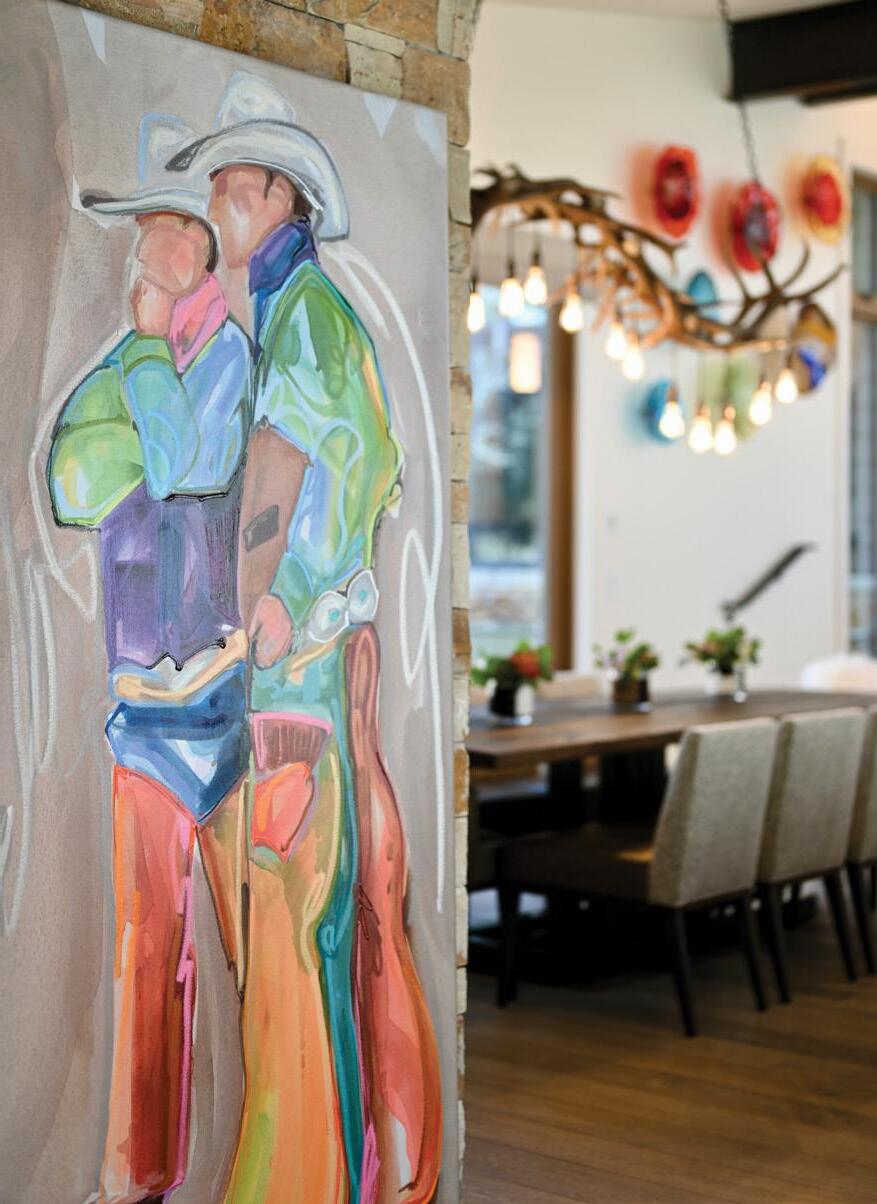



2175 South Platte River Drive
Denver, CO 80223
